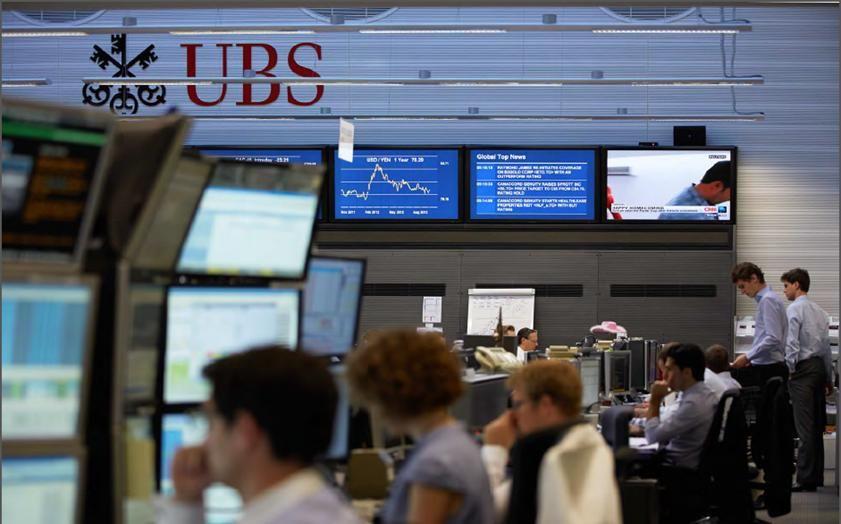We anticipate additional USD weakness in the fourth quarter, followed by a rebound in 2026. For the remainder of this year, we expect the USD to remain weak due to persistent softness in the U.S. labor market, which will keep front-end U.S. Treasury yields under pressure. UBS economists foresee an additional 75 basis points of rate cuts in 2025, exceeding market predictions. This contributes to further compression in rate differentials and lowers the expenses of hedging USD assets. The potential nomination of a new Fed Chair increases the likelihood of the market anticipating more FOMC reorganization that could enable more significant rate cuts in 2026, possibly bringing the U.S. 1-year forward rate down to under 3.00%. Nevertheless, we predict this trend will lose momentum by late 2025, leading to a USD recovery thereafter. Markets are already actively considering topics like de-dollarization, and there is a growing consensus favoring a multi-year downtrend for the USD. In contrast, we maintain the view that the U.S. is well-positioned to defy these expectations by achieving unexpected growth next year linked to fiscal policies and deregulation. Please refer to our complete Q4 FX Outlook for more details on the end-Q4 targets and projected ranges for select G10 FX pairs:
- EURUSD: 1.2300 (with a Q4 range of 1.1500-1.2300). The lower end of the expected range may be hit if U.S. employment data surpass expectations, allowing for doubts about the Fed's ability to implement cuts in both FOMC meetings during Q4. However, we believe structural hedging flows would impose limits on any USD strength, and our economists foresee data that clearly supports 75 basis points of Fed cuts by the end of 2025, suggesting that buying EURUSD on dips remains the wise approach. The nomination of a new Fed Chair will also be significant and could lead to EURUSD appreciation if the nominee fosters a dovish outlook.
- USDJPY: 143.00 (with a Q4 range of 143.00-151.00). Favorable market conditions, low volatility, and ongoing dovish stances from the BoJ make the JPY an attractive funding currency, leaving room for a potential rise to USDJPY 150.00, particularly if the LDP leadership election results in a new PM with dovish tendencies. The JPY's best chance for strengthening would involve the BoJ showing readiness for a rate hike as soon as the meeting on October 30, once political ambiguity and trade concerns have lessened. The challenge for the JPY is that a rate increase this year is already about two-thirds priced in.
- EURGBP: 0.8800 (with a Q4 range of 0.8600-0.8900). The GBP has been performing relatively well during times of heightened risk appetite, benefiting from declining volatility and its attractive carry premium. However, the UK's challenging fiscal situation poses a risk for the currency. Should UK wages and service prices decline significantly enough to encourage more aggressive rate cuts by the BoE in 2026, the GBP may quickly lose its carry premium. The budget announcement on November 26 is a major risk factor.
- EURCHF: 0.9300 (with a Q4 range of 0.9200-0.9450). Given that markets appear to be positioned for some relief from CHF strength in Q4, we believe the consistent demand for "hard assets" (with CHF being the closest fiat FX equivalent), limited scope for SNB easing, and pent-up demand from domestic investors and corporations for hedging USD asset exposure will keep the CHF supported against both EUR and USD.
Disclaimer: The material provided is for information purposes only and should not be considered as investment advice. The views, information, or opinions expressed in the text belong solely to the author, and not to the author’s employer, organization, committee or other group or individual or company.
Past performance is not indicative of future results.
High Risk Warning: CFDs are complex instruments and come with a high risk of losing money rapidly due to leverage. 73% and 72% of retail investor accounts lose money when trading CFDs with Tickmill UK Ltd and Tickmill Europe Ltd respectively. You should consider whether you understand how CFDs work and whether you can afford to take the high risk of losing your money.
Futures and Options: Trading futures and options on margin carries a high degree of risk and may result in losses exceeding your initial investment. These products are not suitable for all investors. Ensure you fully understand the risks and take appropriate care to manage your risk.
Patrick has been involved in the financial markets for well over a decade as a self-educated professional trader and money manager. Flitting between the roles of market commentator, analyst and mentor, Patrick has improved the technical skills and psychological stance of literally hundreds of traders – coaching them to become savvy market operators!
